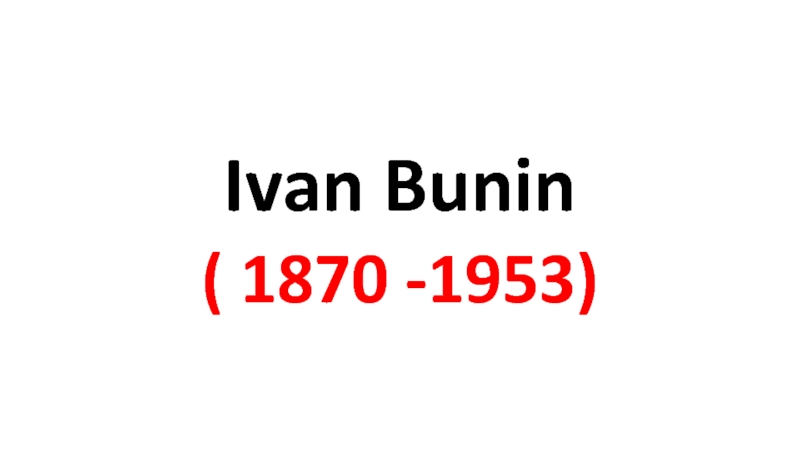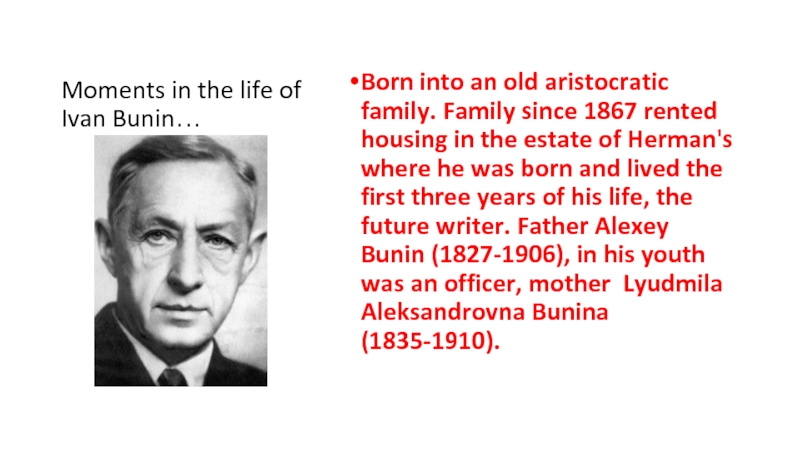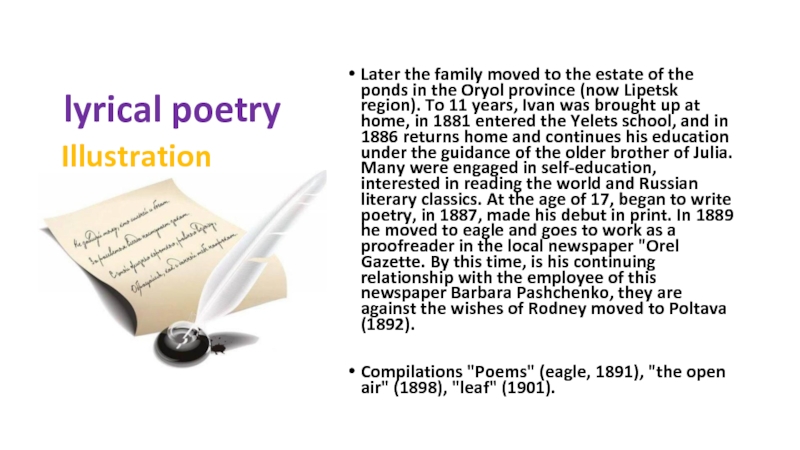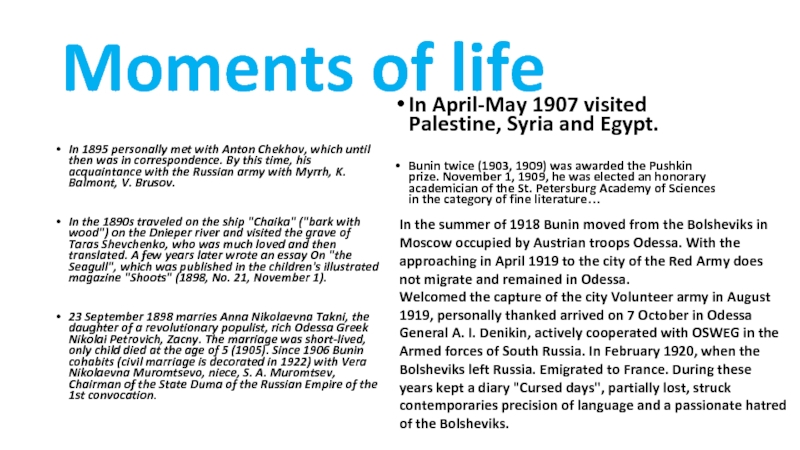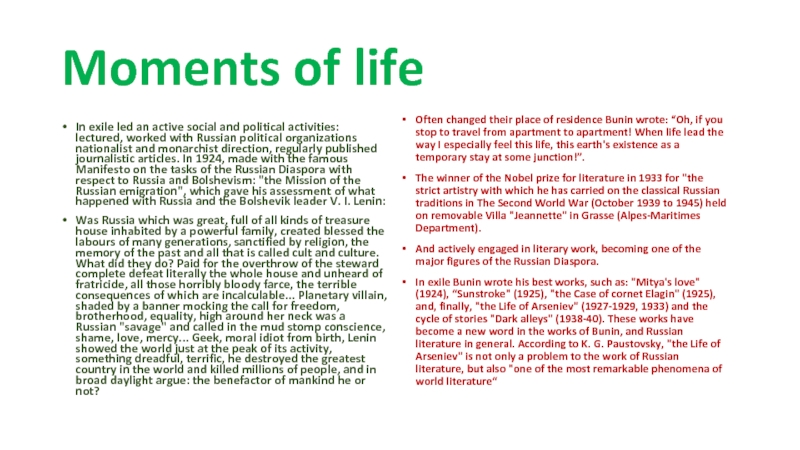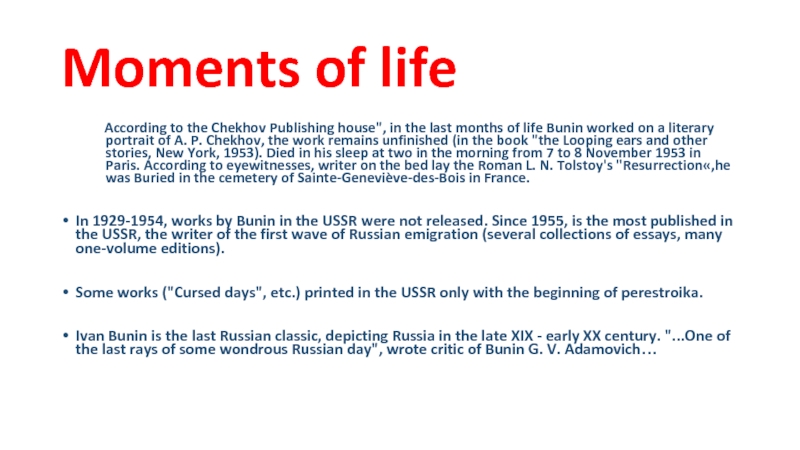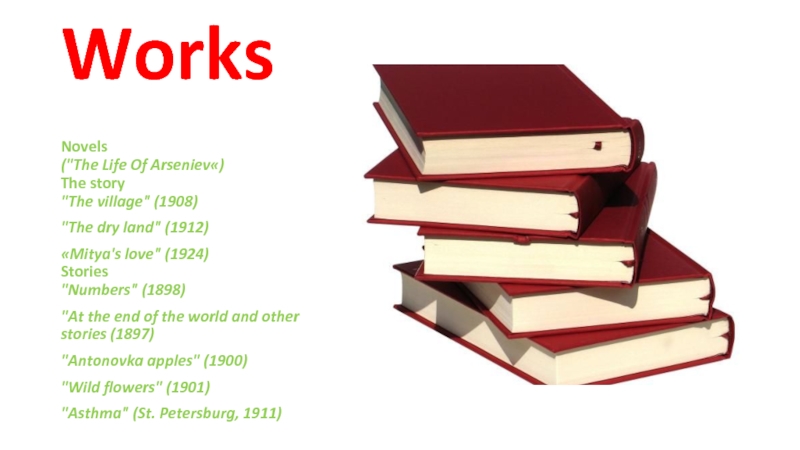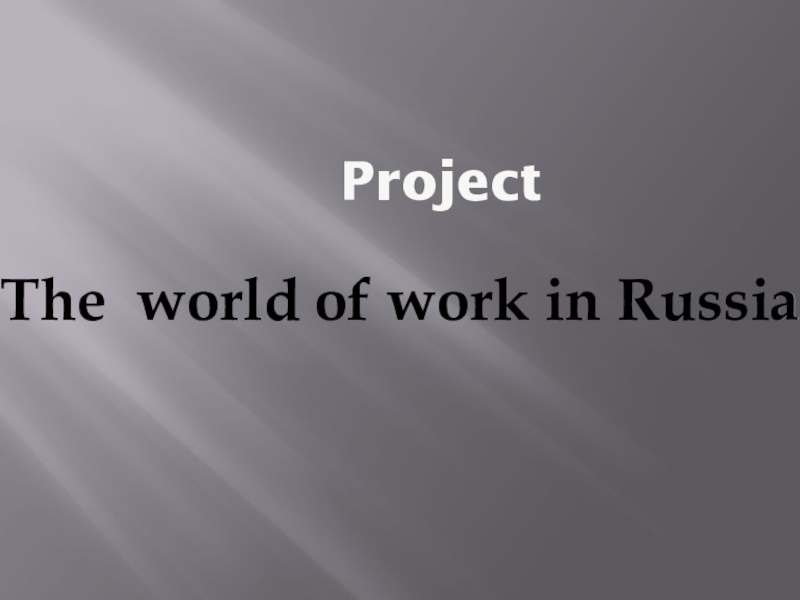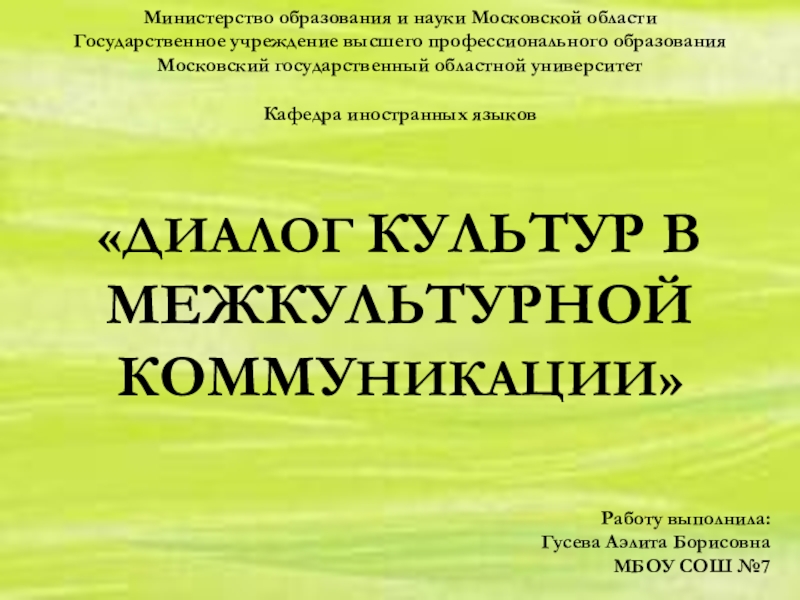- Главная
- Разное
- Образование
- Спорт
- Естествознание
- Природоведение
- Религиоведение
- Французский язык
- Черчение
- Английский язык
- Астрономия
- Алгебра
- Биология
- География
- Геометрия
- Детские презентации
- Информатика
- История
- Литература
- Математика
- Музыка
- МХК
- Немецкий язык
- ОБЖ
- Обществознание
- Окружающий мир
- Педагогика
- Русский язык
- Технология
- Физика
- Философия
- Химия
- Шаблоны, фоны, картинки для презентаций
- Экология
- Экономика
Презентация, доклад по английскому языку на тему И. Бунин (7 класс)
Содержание
- 1. Презентация по английскому языку на тему И. Бунин (7 класс)
- 2. Moments in the life of Ivan Bunin…Born
- 3. lyrical poetryLater the family moved to
- 4. Moments of lifeIn 1895 personally met with
- 5. Moments of lifeIn exile led an active
- 6. Moments of life According to the
- 7. WorksNovels ("The Life Of Arseniev«) The story
Слайд 2Moments in the life of Ivan Bunin…
Born into an old aristocratic
Слайд 3 lyrical poetry
Later the family moved to the estate of the
Compilations "Poems" (eagle, 1891), "the open air" (1898), "leaf" (1901).
Illustration
Слайд 4Moments of life
In 1895 personally met with Anton Chekhov, which until
In the 1890s traveled on the ship "Chaika" ("bark with wood") on the Dnieper river and visited the grave of Taras Shevchenko, who was much loved and then translated. A few years later wrote an essay On "the Seagull", which was published in the children's illustrated magazine "Shoots" (1898, No. 21, November 1).
23 September 1898 marries Anna Nikolaevna Takni, the daughter of a revolutionary populist, rich Odessa Greek Nikolai Petrovich, Zacny. The marriage was short-lived, only child died at the age of 5 (1905). Since 1906 Bunin cohabits (civil marriage is decorated in 1922) with Vera Nikolaevna Muromtsevo, niece, S. A. Muromtsev, Chairman of the State Duma of the Russian Empire of the 1st convocation.
In April-May 1907 visited Palestine, Syria and Egypt.
Bunin twice (1903, 1909) was awarded the Pushkin prize. November 1, 1909, he was elected an honorary academician of the St. Petersburg Academy of Sciences in the category of fine literature…
In the summer of 1918 Bunin moved from the Bolsheviks in Moscow occupied by Austrian troops Odessa. With the approaching in April 1919 to the city of the Red Army does not migrate and remained in Odessa.
Welcomed the capture of the city Volunteer army in August 1919, personally thanked arrived on 7 October in Odessa General A. I. Denikin, actively cooperated with OSWEG in the Armed forces of South Russia. In February 1920, when the Bolsheviks left Russia. Emigrated to France. During these years kept a diary "Cursed days", partially lost, struck contemporaries precision of language and a passionate hatred of the Bolsheviks.
Слайд 5Moments of life
In exile led an active social and political activities:
Was Russia which was great, full of all kinds of treasure house inhabited by a powerful family, created blessed the labours of many generations, sanctified by religion, the memory of the past and all that is called cult and culture. What did they do? Paid for the overthrow of the steward complete defeat literally the whole house and unheard of fratricide, all those horribly bloody farce, the terrible consequences of which are incalculable... Planetary villain, shaded by a banner mocking the call for freedom, brotherhood, equality, high around her neck was a Russian "savage" and called in the mud stomp conscience, shame, love, mercy... Geek, moral idiot from birth, Lenin showed the world just at the peak of its activity, something dreadful, terrific, he destroyed the greatest country in the world and killed millions of people, and in broad daylight argue: the benefactor of mankind he or not?
Often changed their place of residence Bunin wrote: “Oh, if you stop to travel from apartment to apartment! When life lead the way I especially feel this life, this earth's existence as a temporary stay at some junction!”.
The winner of the Nobel prize for literature in 1933 for "the strict artistry with which he has carried on the classical Russian traditions in The Second World War (October 1939 to 1945) held on removable Villa "Jeannette" in Grasse (Alpes-Maritimes Department).
And actively engaged in literary work, becoming one of the major figures of the Russian Diaspora.
In exile Bunin wrote his best works, such as: "Mitya's love" (1924), “Sunstroke" (1925), "the Case of cornet Elagin" (1925), and, finally, "the Life of Arseniev" (1927-1929, 1933) and the cycle of stories "Dark alleys" (1938-40). These works have become a new word in the works of Bunin, and Russian literature in general. According to K. G. Paustovsky, "the Life of Arseniev" is not only a problem to the work of Russian literature, but also "one of the most remarkable phenomena of world literature“
Слайд 6Moments of life
According to the Chekhov Publishing house", in
In 1929-1954, works by Bunin in the USSR were not released. Since 1955, is the most published in the USSR, the writer of the first wave of Russian emigration (several collections of essays, many one-volume editions).
Some works ("Cursed days", etc.) printed in the USSR only with the beginning of perestroika.
Ivan Bunin is the last Russian classic, depicting Russia in the late XIX - early XX century. "...One of the last rays of some wondrous Russian day", wrote critic of Bunin G. V. Adamovich…
Слайд 7Works
Novels
("The Life Of Arseniev«)
The story
"The village" (1908)
"The dry land" (1912)
«Mitya's love"
"At the end of the world and other stories (1897)
"Antonovka apples" (1900)
"Wild flowers" (1901)
"Asthma" (St. Petersburg, 1911)
